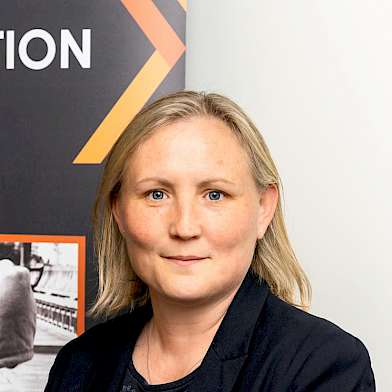Innovative Solutions For a Safer Future for Women And Girls

Violence against women and girls (VAWG) is a complex and sensitive issue, especially their safety in public spaces. The police play a vital role in protecting women and girls from violence, making it crucial for the service to listen to this group’s concerns and seek out ways to better safeguard them.
Modern policing calls for modern solutions, and the service is constantly adapting alongside the ever-evolving world of technology, leveraging advancements to better protect and serve the public. One example is the Safe Space Sussex website, an example of how policing is harnessing technology to create a safe space for victims requiring support and to create a tool to demystify the criminal justice system.
Whilst the website is extremely useful for women and girls, the site houses support and advice for all genders and ages. Being the first of its kind, the Office of Sussex Police and Crime Commissioner recognised the need to provide a comprehensive hub of information for victims and witnesses of crime. This led to the creation of an online directory of local victim support services, information about types of crime and an easy to access guide to the crime reporting process. The resource acts as a gateway to support for victims throughout their journey, empowering them to make the best decisions for them.
The website’s design was informed by feedback from local victims’ services and extensive user testing, to ensure that the website’s design met victims’ specific needs. These valuable insights formed the foundation of the site, which currently lists 80 support services, encompassing any organisation that provides support to victims or witnesses of crime. Safe Space Sussex uses intuitive search options, which allow users to search by area, a specific search term or they can even use an interactive tool which guides them to the tools that will be most useful for their unique circumstance. The service is committed to continuous development, with users also being able to submit their experience of being a victim of crime in the Sussex area, creating a valuable feedback loop to ensure that the support provided is optimised. One such example of this ongoing improvement being the introduction of a live chat function which is currently in development (2023) as the need to provide real-time support for victims who require immediate assistance was recognised.
In addition to the Safe Space Sussex website, police are using statistical mapping to highlight and mark areas where women feel most unsafe. Essex police and the Essex Collaboration Team have teamed up with Nottingham Trent University to develop a statistical model and mapping tool of the Essex locality, labelling high risk areas as ‘Minerva Zones’.
Claire Talbot, who is a Chief Superintendent in the Essex Police, is committed to tackling violence against women and girls. She says,
We can show that people feel unsafe in areas for given reasons, we can map that, and then use intelligence to put better interventions in place.
The aim of the project is to provide community safety activity in these Zones to reduce levels of violence against women and children. The project uncovered a map of areas across Essex, which was then adopted by Safer Essex, a multi-agency partnership board. Community safety partnerships have been informed of their ‘Minerva Zones’, achieving the project’s objective to enable communities to identify where initiatives to tackle VAWG should be focused.
The Minerva Zones initiative reaches far beyond policing, it facilitates community collaboration to make zones safer for women and girls. This could involve changing geographical layouts of areas, and/or local and authority licencing intervention.The project has been divided into four different phases, to tackle distinct areas of the project and ensure evidence-based solutions which address the identified issues.
- Phase 1 of the project has successfully provided a map of Minerva Zones (greater VAWG risk areas) to target.
- Phase 2 involves working on evidence-based decision making with respect to partnership action for the Minerva Zones. This will use the information provided from Phase 1.
- Phase 3 relates to the operational activity that will be undertaken in local communities and seeking to change behaviour based on predictive Minerva mapping. It requires an assessment of the local issues within the space, in order to develop an action plan that will be effective
- Phase 4 will involve an overall assessment of the project’s success
The Future of Minerva Zones:
The model is yet to be shared with other forces but demonstrates how data can be used to target problem areas and direct attention and resources to where they are most needed. Current plans involve circulating the initiative across the east of England. Safer Essex and other strategic boards now have Project Minerva as standing agenda items, demonstrating its importance. The Phase 1 mapping creation model could be shared widely, and it is designed to be a Community Safety Partnership product. This will enable the local Community Safety Partnership (referring to the group in each local council region, whose goal is to reduce crime, amongst a number of other objectives to support the population) to utilise the model for community benefit.


